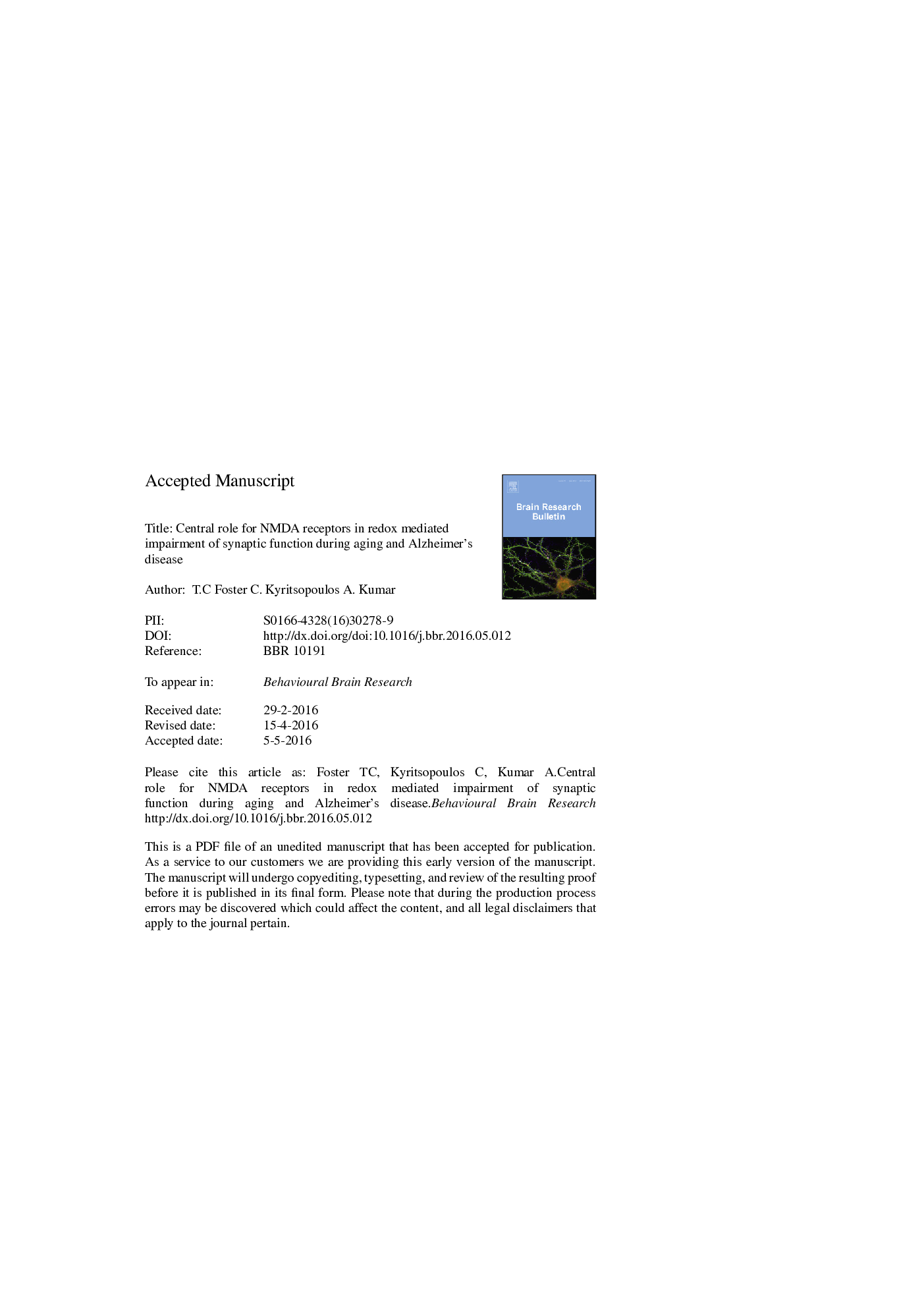| Article ID | Journal | Published Year | Pages | File Type |
|---|---|---|---|---|
| 5735229 | Behavioural Brain Research | 2017 | 57 Pages |
Abstract
Increased human longevity has magnified the negative impact that aging can have on cognitive integrity of older individuals experiencing some decline in cognitive function. Approximately 30% of the elderly will have cognitive problems that influence their independence. Impaired executive function and memory performance are observed in normal aging and yet can be an early sign of a progressive cognitive impairment of Alzheimer's disease (AD), the most common form of dementia. Brain regions that are vulnerable to aging exhibit the earliest pathology of AD. Senescent synaptic function is observed as a shift in Ca2+-dependent synaptic plasticity and similar mechanisms are thought to contribute to the early cognitive deficits associated with AD. In the case of aging, intracellular redox state mediates a shift in Ca2+ regulation including N-methyl-d-aspartate (NMDA) receptor hypofunction and increased Ca2+ release from intracellular stores to alter synaptic plasticity. AD can interact with these aging processes such that molecules linked to AD, β-amyloid (Aβ) and mutated presenilin 1 (PS1), can also degrade NMDA receptor function, promote Ca2+ release from intracellular stores, and may increase oxidative stress. Thus, age is one of the most important predictors of AD and brain aging likely contributes to the onset of AD. The focus of this review article is to provide an update on mechanisms that contribute to the senescent synapse and possible interactions with AD-related molecules, with special emphasis on regulation of NMDA receptors.
Keywords
Related Topics
Life Sciences
Neuroscience
Behavioral Neuroscience
Authors
T.C Foster, C. Kyritsopoulos, A. Kumar,
